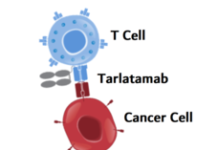In a large series of patients with brain metastasis, venous thromboembolic events (VTEs) were found in 12% of cases. The study team identified thrombogenicity of primary tumour, immobilisation, chemotherapy, obesity, and steroid use that are factors independently associated with VTEs and making components of the PICOS score. Fabian Wolpert of the Department of Neurology, University Hospital Zuirich in Zurich, Switzerland and colleagues reported in the European Journal of Cancer that the PICOS score is superior to established risk models for VTE risk estimation in cancer patients.
The study team reported in background that VTEs represent significant complications in patients with systemic malignancies. In patients with brain metastasis risk of thrombosis is poorly defined. Furthermore, available risk calculation scores are not validated in this population.
The authors identified 811 patients with brain metastasis. They retrospectively reviewed electronic charts for the occurrence of VTEs. Furthermore, they reviewed risk factors. Risk factors were tested in univariate and multivariate analyses and finally integrated in a score model for risk estimation. For validation phase, an independent cohort of 346 patients with brain metastasis was available.
From 811 patients included in the analysis, VTEs were documented in 97 patients (12.0%). The study team confirmed that next parameters are independently associated with VTEs: primary tumours with high thrombogenicity (p = 0.02, hazard ratio [HR] 1.7, 95% confidence interval [CI] 1.1–2.8), dexamethasone (p = 0.011, HR 2.27, 95% CI 1.5–4.5), chemotherapy (p = 0.005, HR 3.4, 95% CI 1.6–7.5), body mass index > 35 kg/m 2 (p = 0.002, HR 3.4, 95% CI 1.6–7.5) and immobilisation (p = 0.003, HR 2.4, 95% CI 1.3–4.3).
The authors derived a score model for VTE risk estimation called PICOS which is based on the thrombogenicity of primary tumour, immobilisation, chemotherapy, obesity, steroid use with possible score of 0 to 7 points.
They ran receiver-operating characteristic curve analysis which demonstrated its prognostic accuracy (area under the curve [AUC] 0.71, 95% CI 0.64–0.77). Its value for the evaluation of VTE risk was superior to that of other scores such as the Khorana (AUC 0.51) or CONKO (AUC 0.52) scores. The potential value of the PICOS score was confirmed in the validation cohort (AUC 0.72, 95% CI 0.63–0.82).
The authors concluded that the PICOS score may become a helpful tool to identify patients with brain metastasis who are at high risk for VTEs. It may be useful for stratification in controlled studies.
Reference
Wolpert F, Berghoff AS, Grossenbacher B, et al. Venous thromboembolic events in patients with brain metastases: the PICOS score. European Journal of Cancer 2020; 134:P75-85. DOI: https://doi.org/10.1016/j.ejca.2020.04.018.








